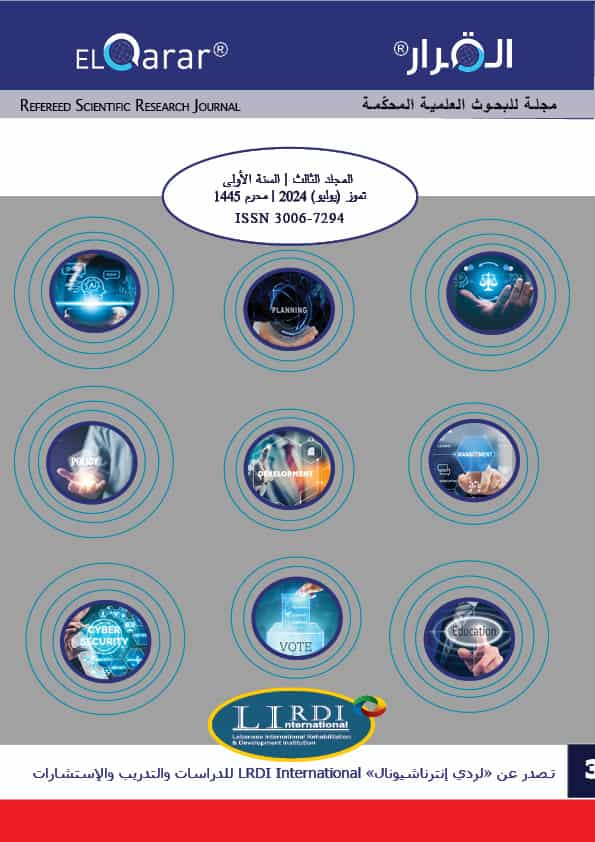A healthcare facility inevitably produces medical waste that can be hazardous to health (Adogu, et al., 2014). Thus, healthcare waste (HW) corresponds to all biological and non-biological materials that are eliminated but not intended for another use. In hospitals, these types of waste are generated for various reasons, such as patient diagnosis, care, vaccination, and related biomedical research (Lakbala & Mahesh, 2011).
The management of HW becomes a major issue because it leads to risks to human well-being and damage to the environment, which have a strong tendency to trigger epidemics (Awodele, et al., 2016). The World Health Organization (WHO) reports that more than 50,000 people die every day from communicable diseases due to poor waste management (Chartier et al., 2014). Specifically, the WHO has estimated that injections using contaminated syringes were responsible for 33,800 new cases of Acquired Human Immunodeficiency Virus (HIV) infections, 1.7 million cases of Hepatitis B (HBV), and 315,000 cases of Hepatitis C (HCV) (WHO, 2018).
In the Middle East and North Africa (MENA) region, the healthcare sector is growing rapidly, leading to a massive increase in the amount of healthcare waste generated by hospitals, clinics, and other institutions. Improper disposal methods, limited physical resources, and lack of research on medical waste management exacerbate this case (Tfaily & Moussa, 2020). This hazardous waste is combined with municipal and industrial waste in many MENA countries, turning it into a mixture of hazardous substances that lead to disease transmission and contamination of water, soil, and air (Yazie et al., 2019).
In fact, effective management and proper disposal of HW are important to reduce infections or illnesses when they come into contact with discarded products and to prevent environmental contamination (Tfaily & Moussa, 2020). However, HW management is a challenge in most developing countries (Yazie, etal., 2019). In particular, the proportion of healthcare establishments that incorrectly dispose of their HW is 18 to 64% (WHO, 2004). The implementation of this care waste management is still due to technological, economic, social difficulties and insufficient training of personnel responsible for handling this waste (Adogu et al., 2014).
Hence, WHO has prepared various biomedical waste management guidelines to ensure the safe management of healthcare facility waste (Letho et al., 2021). Several studies have evaluated healthcare waste management in hospitals in Bhutan (Letho et al., 2021), Nigeria (Awodele et al., 2016), and Lebanon (Tfaily & Moussa, 2020). They showed gaps in the presence or the correct application of policies and procedures, as well as a lack of awareness among healthcare providers.
In Lebanon, according to the Lebanese organization Arc-en-ciel, there are 13,500 beds in hospitals that produce an average of 8100 kg/day of infectious risk HW (HWRI), of which only half are properly treated. In addition, 70% of small hospitals are unable to invest in the treatment of their waste to comply with the standards of the Ministry of Health and the Environment. The management of these wastes faces both an environmental problem and a global health threat due to the lack of regulations, knowledge, and advanced treatment and disposal systems (Tfaily & Moussa, 2020), as well as the economic crisis. Indeed, the increase in the rate of waste generation in most hospitals in Lebanon suggests that this waste is unregulated and that there is a poor auditing system (Maamari, et al., 2015).
In fact, good management of medical waste in the hospital depends on a team dedicated to accomplishing this mission, good administration, careful planning, good organization, underlying legislation, adequate funding and full involvement of trained staff (Letho et al., 2021). Thus, it is relevant that before adopting any of these options, hospitals and medical institutions should assess the problems and come up with a management strategy suitable for their economic situation and also sustainable to use, based on local technology (Letho et al., 2021). Therefore, the main objective of this study is to assess the quality of hospital care waste management, with care directors and nursing staff working in four hospitals located in the Mount Lebanon region and North Lebanon.
Reference | ElQarar for Scientific Research Journal | First issue | Volume One | First year | January 2024 | Rajab 1445
![]() View the full study | PDF 509 KB
View the full study | PDF 509 KB








+ لا توجد تعليقات
أضف لك